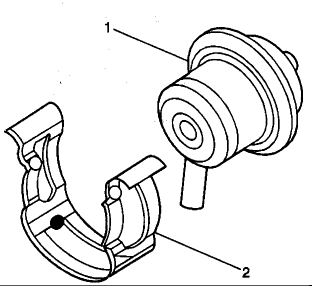Plugging the port is not going to do anything. That is where a vacuum hose must be connected. GM has had a lot of trouble with their fuel pressure regulators leaking out of that port. Other than that, regulators cause very little trouble.
To verify you have the right regulator, look at the vacuum hose routing diagram on the emissions sticker under the hood. Do not use a service manual that is three years different than your truck. Major changes take place every year, especially with GM products.
There are two forces acting on a molecule of gas when it leaves the injector. Intake manifold vacuum is pulling on it, and fuel pressure is pushing on it. During coasting, vacuum goes way up. That increased force would pull in too much fuel resulting in an excessively-rich coast-down condition. To prevent that, vacuum is applied to the regulator to modify its spring pressure on the internal diaphragm. That lowers the pressure it keeps the fuel at, thereby keeping the same overall force pulling on the fuel. Higher vacuum during coasting and lower pressure.
The opposite occurs during acceleration or when lugging uphill. Vacuum goes way down, so pressure goes way up. The net difference between the two forces remains constant. They have gone away from the fuel pressure regulator on the fuel rail on many newer vehicles. The regulator is inside the gas tank and does not have a vacuum hose hooked to it. Instead, fuel pressure remains steady under all driving conditions, and the engine computer is programmed to shorten the injector pulses when vacuum is high. During coasting, fuel gets pulled in faster, but for a shorter period of time, so the rich coast-down condition is prevented.
Those two fuel delivery systems are very different, and you need the regulator designed to do what the system needs. In your case that is a regulator with a vacuum hose attached. It sounds like you're removing the wrong one for your engine.
Wednesday, June 2nd, 2021 AT 2:48 PM
(Merged)
